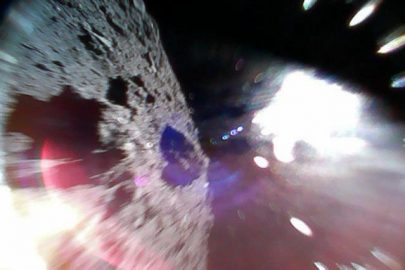After months of hovering around its target, Japan’s Hayabusa 2 mission has made contact. Two of the host spacecraft’s landers (ROVER-1A and 1B) have touched down on the surface of the asteroid 162173 Ryugu and have already been hopping around as they take photos (like the one above) and gauge the space rock’s temperature. As far as the mission has come, though, it’s really just the start.
Hayabusa 2 is also poised to launch ROVER-2, which adds optical and ultraviolet LEDs to spot floating dust particles. MASCOT (Mobile Asteroid Surface Scout), meanwhile, will tumble rather than fly but can use its camera, infrared spectrometer, magnetometer and radiometer to study the smaller structural details of the asteroid’s looser surface material. The main Hayabusa 2 vessel should near the surface in October, when it will shoot a tantalum ‘bullet’ into the asteroid so that it can catch particle samples and return them to Earth.
You’ll be waiting a while for the samples to return. Hayabusa 2 doesn’t leave until December 2019, and isn’t expected to return home until December 2020. The payoff promises to be huge, though. Scientists will not only collect more samples than during the first Hayabusa mission, they’ll have lander data that wasn’t available after the first Hayabusa’s Minerva robot failed.
Photo taken by Rover-1B on Sept 21 at ~13:07 JST. It was captured just after separation from the spacecraft. Ryugu’s surface is in the lower right. The misty top left region is due to the reflection of sunlight. 1B seems to rotate slowly after separation, minimising image blur. pic.twitter.com/P71gsC9VNI
— HAYABUSA2@JAXA (@haya2e_jaxa) September 22, 2018
Source: yahoo
Ask me anything
Explore related questions





